The Red Square
The color red bore a special significance for Frank Lloyd Wright (1867-1959), to him it was the color of creation. In a 1938 edition of Architectural Forum dedicated especially to Wright, a quote from the plant physiologist Timiriazev poetically gave it meaning: 'The color red is invincible. It is the color not only of the blood—it is the color of creation. It is the only life-giving color in nature filling the sprouting plant with life and giving warmth to everything in creation.'[1]
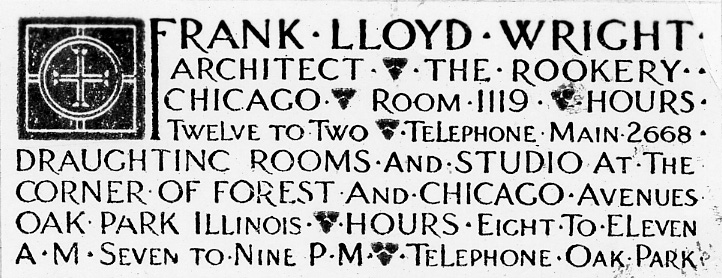
Figure 1. Announcement of Wright's architectural practice, 1898 © 2011 Frank Lloyd Wright Foundation / Artists Rights Society (ARS), New York.
Figure 1 shows the symbol Wright originally used to sign his architectural drawings when he first began independent practice: a red square circumscribing an encircled crossing. A closer look reveals two distinct parts: a central cross and a circle inscribed within a perfect square connected at the cardinal directions. This red square is related to the fundamental 'Gothic Master Diagram' or circle of orientation,[2] which through shadow casting was the first mark the ancients made when orienting a building plan on a site with respect to the sun. The divine coördinating principle used was geomancy, which is derived from the Greek words geo, literally meaning the earth, and manteia, meaning divination or coming from above. Geomancy is a talismanic operation of projecting lines onto the earth from the cosmos above through marking the ground with a cross and encircling it to create the initial square of a building plan.[3]
The logic of using a circle of orientation inscribed within a red square suggests that Wright's initial logo meant divine creation. H. P. Blavatsky (1831-1891) described the hidden meaning of this mystical plan as:
The philosophical cross, the two lines running in opposite directions, the horizontal and the perpendicular, the height and breadth, which the geometrizing Deity divides at the intersecting point, and which forms the magical as well as the scientific quaternary, when it is inscribed within the perfect square, is the basis of the occultist.[4]
Late 19th-early 20th century America was an era of confluence of science, philosophy and religion, the foundation upon which Theosophy was constructed. The Theosophical belief system was codified under the rubric of the Ancient Wisdom—divine knowledge conjoining science with religion. This was in keeping with a contemporary polemic that equated religion (belief based on faith) with science (knowledge based on empirical data of physical phenomena), which was precisely summed by the Chicago philosopher publisher Paul Carus with respect to the 1893 World's Parliament of Religions: 'Religion must be in perfect accord with science;… Science is divine and the truth of science is a revelation of God. Through science God speaks to us; by science he shows us the glory of his works; and in science he teaches us his will' [5] .
Theosophists had figured prominently in this Parliament, which concluded the 1893 World's Columbian Exposition in Chicago. The movement was represented by its President, Mrs. Annie Besant, Vice-President William Q. Judge, Prof. C. H. Chakravarti, and H. Dharmapala, among others.[6] Wright, too, had contributed to the Exposition, in the form of delicate ornamental details for Louis Sullivan's (1856-1924) polychromed basilican Transportation Building. With its Golden Doorway and red façade with frieze of angels, Sullivan's building was a shocking contrast to the pristine Beaux Arts exposition halls of the White City. Taken as a whole, the Columbian Exposition was a technological and scientific marvel that would significantly affect American architecture, technological production and urban planning for the future.
The development of modernity in America was coincident with an occultism that was supported by various technological advances such as electricity. The popular use of electricity began with the 1893 Exposition when Westinghouse's more economical alternating current was the successful bidder to power this world's fair over the Theosophist Thomas Edison's direct current.[7] Electricity supported the mid-19th century belief in the existence of alternative worlds charged with invisible forces. With its basis in scientific fact, electricity with its implication of invisible force fields verified the plausibility of the American Spiritualist belief that other invisible energy forces could conceivably dwell within the spirit realm.
Besides introducing Eastern religions to the West, this World's Fair was to herald scientific inventions that would anticipate Albert Einstein's 1905 Special Theory of Relativity and would forever alter popular conceptions of time and space. For example, while the automobile had introduced new notions of movement and personal freedom, and photography had captured movement in frame stills that could later be reconstituted as movement through the cinematographical apparatus, the Ferris Wheel conjured an entirely new physical sensation by providing the rider with an expansive birds-eye view of the Fair by moving in a circle vertically in time and space. Invented specifically for the 1893 Columbian Exposition to rival the Eiffel Tower, this engineering masterpiece's scale was incredibly deceptive: in photographs this 250-foot high steel structure looks like the familiar carnival ferris wheel until the seats are recognized to be Pullman railroad cars with built-in lunch counters and seating for forty persons. This Ferris Wheel could accommodate 1,440 persons for a ride of two revolutions, each revolution taking twenty minutes.[8]
Modernity in 20th century America would be shaped by a pervasive Theosophical atmosphere that coupled science with religion to cause a reconsideration of mental/spiritual relationships and a redefinition of space/time concepts. Theosophy's introduction of Eastern metaphysics to Western culture revealed possibilities of the inner self with respect to the outer being and opened the way to conceive of inner space, or interiority. Theosophy embraced new scientific discoveries and used them to support the teachings of the Ancient Wisdom, especially new concepts of space and time such as the fourth dimension and relativity, which together with technological advances promoted a popular fascination towards movement and inaugurated the modern conception of continuity in space. Theosophical architecture would become a space of interiority defined by light and continuity regulated by geometry as a (re)creation of cosmic order.
Wright would later abbreviate his signature to a simple red square.
Destruction of the Box
In 1910, the Berlin publisher Ernst Wasmuth issued a magnificent 100-drawing folio of Wright's executed buildings entitled Ausgeführte Bauten und Entewürfe von Frank Lloyd Wright. Wright was in love and the drawings expressed it.[9] In love with Mamah Borthwick Cheney, the wife of one of his clients for whom he had left his wife of twenty years Catherine Lee Tobin and six children to travel with to Europe in September 1909. They settled in the Villino Belvedere of Fiesole on a hill above Florence where Wright worked on the drawings while in constant communication with his assistants and office. The final edition of this monograph of lithographed plates was issued in 1,000 copies, 500 for sale in Europe and 500 for exportation to America. This priceless document would later become known as the Wasmuth Portfolio. Wright wrote the introduction to this limited edition in June 1910, which was not republished until forty-one years later when it was re-titled 'The Sovereignty of the Individual'.
The following year Wasmuth reissued a popular version of the portfolio in a reduced size, reusing the plans but substituting photographs for the detail drawings and perspectives. In September 1910, prior to his return to America, Wright and Cheney visited Charles and Janet Ashbee at their arts and crafts cooperative in the countryside outside of London. Ashbee was a leader of the English Arts and Crafts movement, whose designs, community and published writings were well-known in Chicago. While there, Wright asked Ashbee to write the introduction to the 1911 Wasmuth edition, which was then substituted for Wright's original introduction.
The portfolio and book along with the March 1908 issue of Architectural Record, which included eighty-seven drawings and photographs of Wright's buildings, were widely circulated to the contemporary architects of Europe. According to his son Lloyd Wright, these publications were being used in European schools and universities for textbooks.[10]
This retrospective of the first seventeen years of Wright's independent professional work is probably the most important architectural publication of the 20th century because it set the direction for the modern conception of space. Prior to the Wasmuth Portfolio, space was mentioned in architectural treatises primarily in terms of proportion, such as the space between columns or the void within a staircase. Interior space was not mentioned unless with respect to the atrium, which is an exterior space within the interior of a building.[11]
Introducing the notion of interiority in the Wasmuth essay, Wright wrote, 'Until the student is taught to approach the beautiful from within, there will be no great living buildings which in the aggregate show the spirit of true architecture.'[12] While this essay reached a select audience due to its limited production run, the images in both Wasmuth editions together with those from Architectural Record show an architecture guided by space and light: works whose interior spaces were equal to the exterior form and whose forms had been molded by the plan and its three-dimensional extension into space. Never had space been expressed in a plan the way Wright did in these drawings.
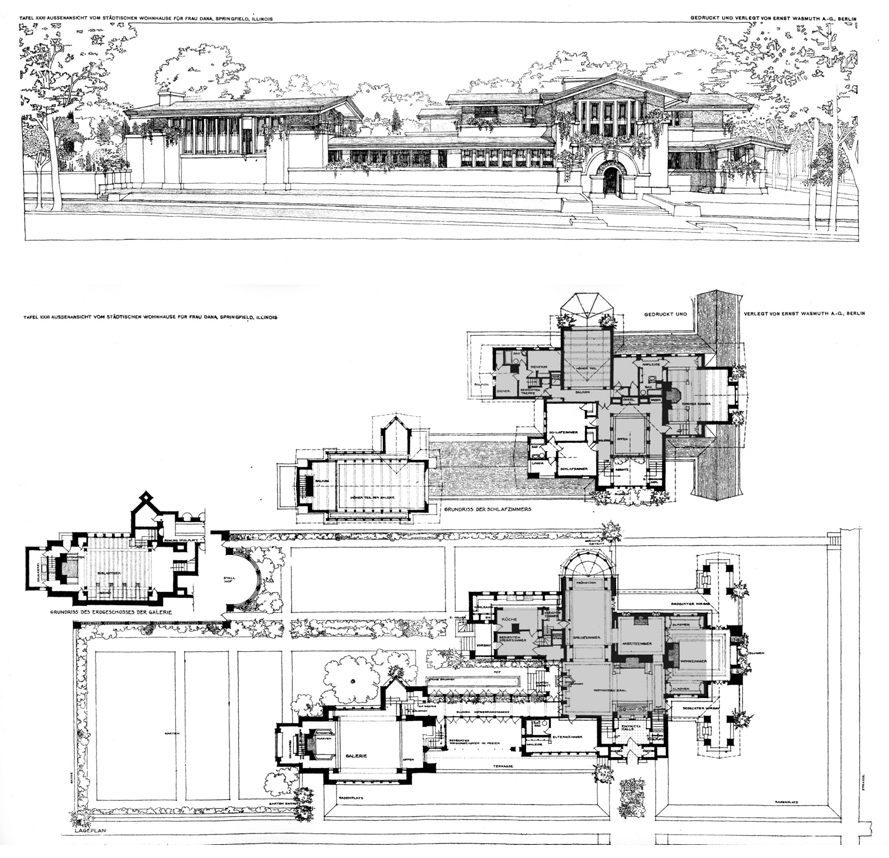
Figure 2. Frank Lloyd Wright, Susan Lawrence Dana House, 1899 © 2011 Frank Lloyd Wright Foundation / Artists Rights Society (ARS), New York. Shaded areas show limits of original house.
True to the logic of the red square, the Theosophist Blavatsky described divine creation as:
The Universe is worked and guided from within outwards. As above so it is below, as in heaven so on earth; and man—the microcosm and miniature copy of the macrocosm—is the living witness to this Universal Law and to the mode of its action. We see that every external motion, act, gesture, whether voluntary or mechanical, organic or mental, is produced and preceded by internal feeling or emotion, will or volition, and thought or mind. [13]
Blavatsky may as well have described the modern design process, or as Wright's lieber meister Sullivan would have said, 'form follows function': the plan is shaped internally by functional requirements and is then extended outwards in three dimensions to mold the form of the space. Previously, buildings had been designed using precedent and formal relationships, such as proportion and geometry, but not necessarily with respect to specific functional requirements.
Consciously or not, Wright had been prepared to assimilate Blavatsky's Theosophical worldview of the creative act. While his mother had grown up in an extended clan of Welsh Unitarians, after their marriage, his polymath Baptist preacher father later turned Unitarian, stopped preaching, studied Sanskrit and chanted the mantras and hymns of the Vedic texts to help him understand the divinity present in the cosmos and inner self. Together, Transcendentalist texts, which promoted seeking inspiration from an inner light, were frequently read in the Wright household.[14] When Wright later authored 'The Sovereignty of the Individual', he had been informed by a long lineage of intertwined influences from Eastern and Western religious sources within a cultural context of social reform and belief in progress and democracy in support of freedom of the individual and one's own experience, or 'Individual Sovereignty'.[15]
Like Blavatsky's expanding universe, the projects in Wright's Wasmuth Portfolio demonstrate architectural spaces that were guided from within outwards: in the three dimensional development of their spaces the initial square has been expanded outwards to go beyond its cubic confines at the corners to 'destroy the box'.[16]
The Susan Lawrence Dana House was one of Wright's earlier houses (figure 2). While it is dated 1899 in the Wasmuth Portfolio, it was not completed until late 1904, and is the only project he designed that incorporated an existing structure. Critical to the development of Wright's oeuvre, the Dana House was a total work of art that included sculpture, stained glass, fixtures, and furniture—all designed and crafted under Wright's direction.
Dana was a widow whose husband and father had died within months of each other in 1900; her mother later died in 1905 within a few months of occupying house. Dana was a Spiritualist ostensibly in communication with her dead family through a medium amanuensis. She later became interested in Theosophy and New Thought; in 1924 she established the Lawrence Metaphysical Center in her home, supported by her vast library of occult books.[17]
As described in the Wasmuth Portfolio, the function of the house was to include a gallery that could accommodate the art collection of its owner and be used for entertaining extensively. Wright resolved this functional program by pulling the gallery away from the main house to maintain privacy in the home and connected it via a covered passage, the passage itself serving as a conservatory.[18] To reach the gallery, guests could either enter the conservatory from the main reception hall via the front door or enter directly from the terrace outside.
At the heart of the house Wright retained the existing two-story Victorian structure, shown shaded in plan, and wrapped the new construction around it. Within the parlor with its pre-existing Italianate marble fireplace, the spirit of her late father could dwell in the only non-remodeled room filled with furniture and memorabilia from his original home. The adjacent reception hall with its new fireplace served as the hearth and heart that formed the focus around which the whole house took order and shape. This Semperian strategy would set the precedent for Wright's future houses.[19]
When the European reader regarded the Dana plan, the axial relationships of its space extending in three dimensions were vividly revealed to be unlike anything seen before. The rooms pinwheel from the heart of the house by extending horizontally and vertically in plan, suggesting the infinity of the x-y axis. The notion of infinite axial relations would later become the basis for the Dutch De Stijl movement. In reading these plans, the trained eye must have marveled with the realization that one could stand still and have the spatial continuity of the entire house visually unfold.
The two exterior perspective drawings expressed a strong horizontality with a cruciform shape rising out of the mass that would prefigure the work Wright would later do at Unity Temple. The one interior perspective showed the incredible spatial interconnectivity of four floors that could be seen from the conservatory entrance to the gallery. While the photographs of the second edition were helpful and showed the interior spaces, furniture and furnishings, they did not do justice to the work and were inadequate to express the innovative spatial relations.
Impossible to adequately portray in either publication was the quality of light that filled the house, filtering through the windows. As can be seen from the plan, many of the exterior walls were almost screens due to the extensive fenestration. The windows were leaded glass with various shades of amber stained glass in a stylized geometric pattern inspired by the sumac plant. According to Wright, 'I have used opalescent, opaque, white and gold in the geometrical groups of spots fixed in the clear glass… believing the clear emphasis of the primitive color interferes less with the function of the window and adds a higher architectural note to the effect of light itself.'[20] The effect of light in the Dana House together with an interiority that demonstrated an expansive array of spatial relationships set the direction for a 'new concept of architecture, by light and freedom of space.'[21]
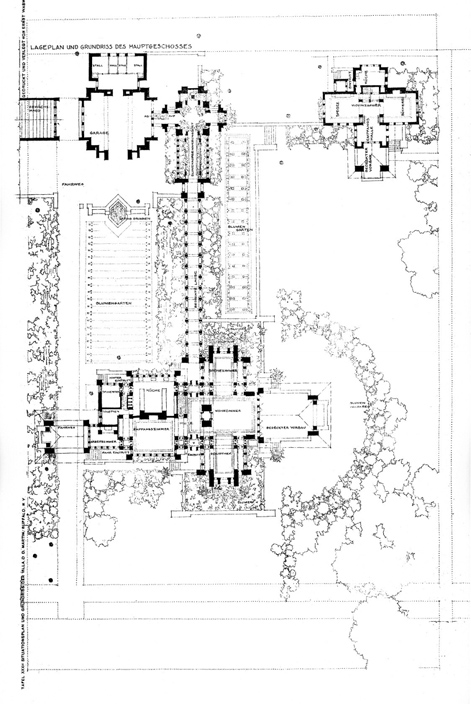
Figure 3. Frank Lloyd Wright, Darwin D. Martin House, 1904 © 2011 Frank Lloyd Wright Foundation / Artists Rights Society (ARS), New York.
The Dana House was followed in the portfolio of drawings by the Darwin D. Martin House (figure 3), dated 1904. Unconstrained by the limitations of designing around an existing structure, the exquisite plan of the Martin House demonstrates similar qualities of light and space in its axial relationships and building envelope, but takes them much farther. The x- and y-axes are so clear and precise they are as if cut by a knife, the primary crossing a shift at the heart(h) of the home. The barrier between inside and outside seems non-existent: the interior space extends outwards and dissolves into the landscape due to the profusely fenestrated semi-permeable exterior walls that allow the house to breathe.
The various interior spaces interpenetrate and oscillate within the picture plane, prefiguring two-dimensional non-objective modern art styles such as De Stijl and Suprematism. A module regulates the plan and punctuates the rhythm of movement throughout the space. The feeling of syncopated rhythm would not be expressed in a two-dimensional representation until Piet Mondrian's Broadway Boogie Woogie nearly forty years later. The Dutch Mondrian had turned to Theosophy in 1909, which would later guide the simplicity of his linear/planar De Stijl geometric abstractions that were based on repeating the square.
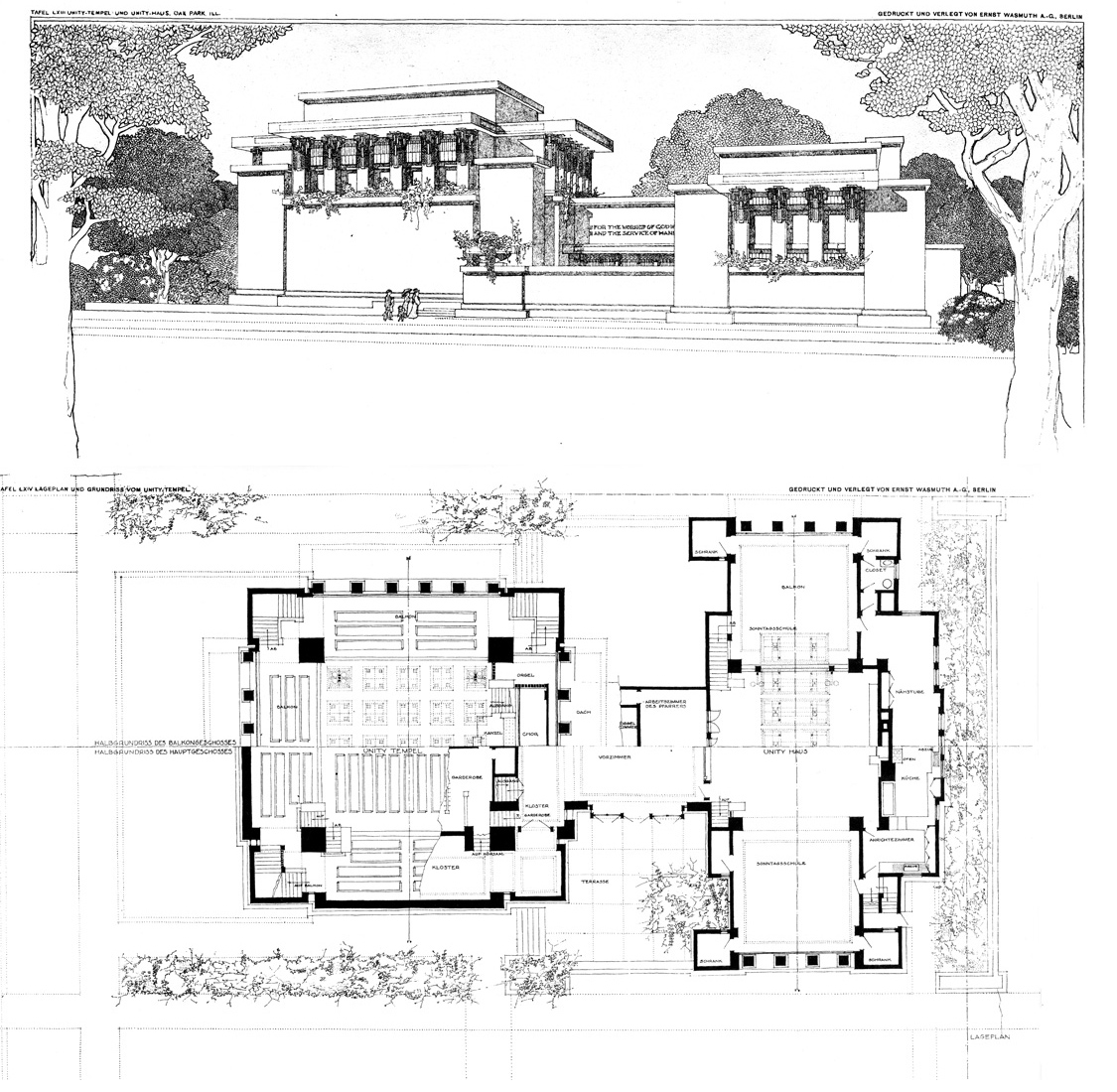
Figure 4. Frank Lloyd Wright, Unity Temple, 1905 © 2011 Frank Lloyd Wright Foundation / Artists Rights Society (ARS), New York.
Historically, the notion that interior space together with light equals architecture has always been a spiritual notion, typically characterized by religious not residential architecture. Yet, the quality of interiority that evolved from the Dana House would anticipate the 1905 Unity Temple (figure 4) for the Universalist pastor Dr. Johonnot. This was the first project where Wright recognized the significance of his design strategy; where he discovered that 'the space within the building is the reality of that building… the new reality that is space instead of matter'.[22] This was in striking contrast to the then-current Beaux Arts form-conscious focus on the materiality of architecture—the surface treatment of its mass and the style of its ornament. In 'The Sovereignty of the Individual', Wright spoke against Classical architecture at length in favor of a revival of 'the organic character of form and treatment of the Gothic spirit'[23] where architecture evolves from within outwards due to satisfying the inner necessity of form following function.
Wright's organic architecture was about the quality of the space, not the appearance of its form, and was developed from a consideration of the nature of materials, structural necessity and functional use. This predilection for space over matter had been developed by Wright within the context of a late-19th century intellectual reaction against materialism—a worldview that grew out of the positivistic trend in science to measure the tangible, physical forces of the material world in order to understand the universe. In contrast, the early-20th century was an era of space and time that looked to intangibles to understand the cosmos: n-dimensional geometries and theories of relativity. According to Wright:
Unity Temple is where I thought I had it, this idea that the reality of a building no longer consisted in the walls and roof… You will find the sense of the great room coming through—space not walled in now but more or less free to appear. In Unity Temple you will find the walls actually disappearing; you will find the interior space opening to the outside and see the outside coming in.[24]
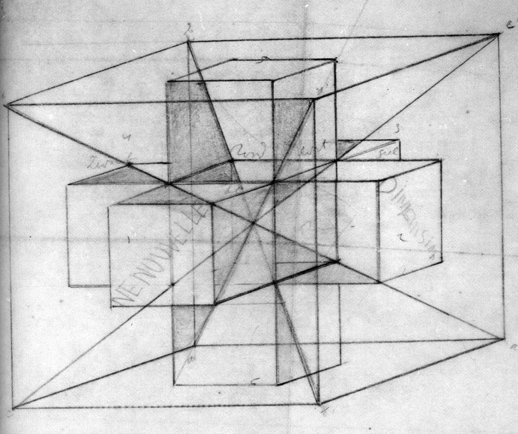
Figure 5. Theo van Doesburg, Une Nouvelle Dimension, 1925-1929.
Wright conceived of the interior as one 'noble ROOM… and let the room shape the whole edifice, let the room inside be the architecture outside.'[25] In the three dimensional development of the nave's square plan, this noble room was expanded to become a cube and then projected outwards again as a four-dimensional hypercube (figure 5) to 'destroy the box'. Wright was able to turn this building inside out by being true to the nature of materials and through using his structural intuition from two previous years of civil engineering study at the University of Wisconsin during 1885-87 followed by working with Frederick Baumann, the structural engineer at Adler and Sullivan.
The church was constructed of concrete, which was poured into wooden formwork. The economics of concrete lies in reusing the forms; the geometry of the square lends itself to four equal sides, its quaternary symmetry suggesting the least amount of formwork. Surprisingly to the non-engineer, economy of structure lies with the cantilever, which equilibrates the forces in a beam reducing its depth and requiring less material, brings the supports away from the ends and frees the corners of the box. According to Wright, in the Unity Temple through technology:
The sense of the room is not only preserved—it may be seen as the soul of the design… the "inside" becoming "outside"… organic integrity in structure out of which issues character as an aura. The consequence is style. A stylish development of the square becoming the cube.[26]
In looking at the perspective drawing, the central nave can be seen ascending from the body of the building with the temple's side aisles projecting outwards, revealing a building with a glorious cube at its heart and a void at its corners. The reality of the temple is its interior space issuing as an 'aura' or its cubic spirit within, the reality of which is interior space. To Wright, 'Reality is spirit… reality is supergeometric, casting a spell or a "charm" over any geometry, as such, in itself.'[27] This occult quotation reveals Wright's consideration of space as spirit, the matter or reality of architecture, and demonstrates the basic tenet and cardinal Theosophical doctrine of the primacy of spirit over matter. His view that the reality of space is supergeometric refers to the Theosophical 'geometrizing Deity' who looks down from above during acts of divine creation.
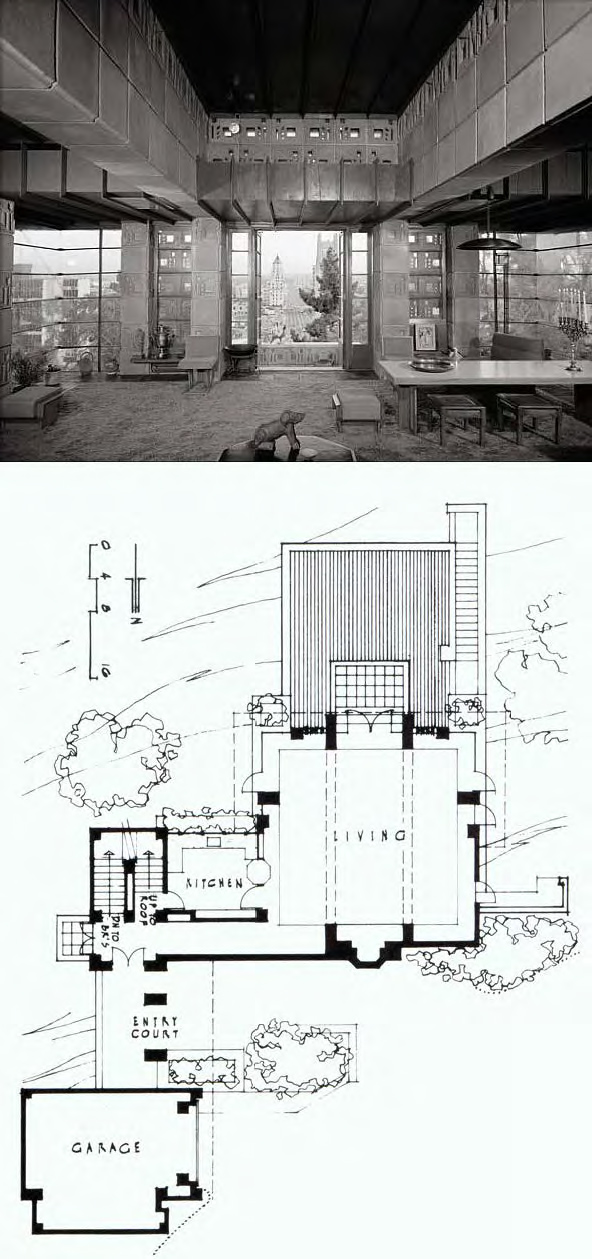
Figure 6. Frank Lloyd Wright, Freeman House, 1922 © 2011 Frank Lloyd Wright Foundation / Artists Rights Society (ARS), New York.
The logical conclusion of the destruction of the box would eventually lead to a complete dissolution of the corners of the cube to 'extend the vista'[28] and bring the outdoors in, such as with the Freeman House of 1922 (figure 6).
Continuity in Space
During 1925 Wright's work was published in seven consecutive 24-page issues of Wendingen, a Dutch architectural publication edited by the architect and dedicated Theosophist Hendricus Theodorous Wijdeveld. These seven Wrightnummers included nearly 200 photographs and drawings of 31 projects, seven of which had been previously published in the Wasmuth Portfolio. Each issue included an introductory essay by a significant author familiar with Wright's work. Included were essays by Erich Mendolsohn and H. P. Berlage, leading European architects who had personally visited America to experience Wright's work.
Wright was in love again. The previous year he had met his future wife Olgivanna Lazovich, who was a disciple of the Russian Georgi Ivanovich Gurdjieff, the cult leader of the Institute for the Harmonious Development of Man. Gurdjieff's teaching evolved out of his initial contact with Theosophy and used a body-centered approach to awaken consciousness to receive higher knowledge. One of his techniques included sacred dances that were based on the (re)creation of cosmic geometry through visual reenactments of the laws of the universe.[29] Olgivanna was one of the Institute's best dancers.
Previously, Wijdeveld had published a special Wendingen edition of Wright's work in 1921. El Lissitzky had designed the cover of this syncretic architectural journal and Dutch interest in Wright was at its zenith. This issue of the journal was enthusiastically collected because the magazine included several projects constructed since the Wasmuth editions.[30] Already familiar with the infinite axes of Wright's plans and the interpenetrating spaces of his interiors, readers must have been awed by the seemingly non-objective murals for his last great Chicago commission, the 1914 Midway Gardens.

Figure 7. Frank Lloyd Wright, Midway Gardens, south wall of the Tavern Room, 1914 © 2011 Frank Lloyd Wright Foundation / Artists Rights Society (ARS), New York.
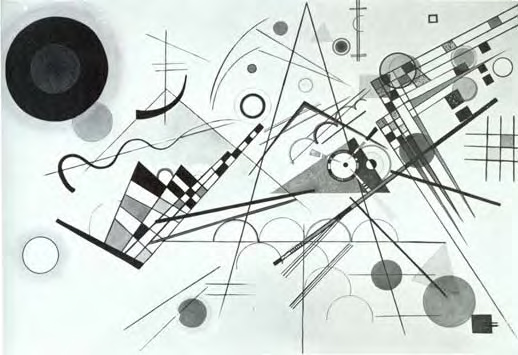
Figure 8. Vasily Kandinsky, Composition No. 8, 1923, © 2011 Frank Lloyd Wright Foundation / Artists Rights Society (ARS), New York. First painting by the artist to enter the Guggenheim collection.
The murals were designed by Wright making decorative sketches, which his son John later transferred to the endwalls of the tavern room (figure 7).[31] While on site during the installation and sitting in the summer garden on 14 August 1914, Wright had received the devastating news that his great love Mamah Cheney, her children and members of his staff had been brutally murdered at their Spring Garden, Wisconsin home by the cook; and that part of the house had been burned down as well,[32] including most of his 500 copies of the Wasmuth Portfolio.
When finished, the Midway Garden murals appeared illuminated like the stained glass of his previous residences, except these compositions were additionally filled with movement and broke free of the frame penetrating beyond into another dimension. Originating in New York, the travelling Armory Show had opened in Chicago the previous year and included 'Cubist' works that depicted movement through time by artists such as Francis Picabia, Pablo Picasso and Marcel Duchamp. Wright's murals were immediately identified by Chicago commentators as 'Cubist'.[33]
Expressionist paintings by the Russian Vasily Kandinsky were also represented at the Armory Show. At this time, the work Kandinsky exhibited was representational, for example Improvisation No. 27 (Garden of Love). He had been living in Munich, was involved with the German Theosophical Society and had recently finished writing Concerning the Spiritual in Art in which he discussed art in Theosophical terms.[34] As in America, interest in n-dimensional geometries and relativity were a popular conception prompting Kandinsky's interest in creating the illusion of new kind of space. Due to the outbreak of World War I, he moved back to Russia where lived in Moscow 1914-1921.
Theosophy's primacy of primary geometric forms as regulators of the universe together with his exposure to the Russian avant-garde artists such as Kazimir Malevich and El Lisstizky in Moscow must have been the cause of the radical shift in his work from expressionism to non-objective art. He later moved to Berlin to settle at the Bauhaus in 1923, where he remained for the next decade. Kandinsky's work (figure 8) from this period is much more similar to Wright's Midway Garden murals than to his own work of 1914, suggesting a possible influence from the 1921 Wendingen publication.
Malevich made a great distinction between abstract art and non-objective art. Abstract art is representational; it represents what can be seen in the visible world and abstracts it through the use of geometry and primary forms. For example, Wright abstracting the sumac to inspire the Dana House stained glass designs. Non-objective art has no referent in the tangible world of objects. According to Malevich, 'the artist who creates rather than imitates expresses himself'[35] through creating a new reality that is not based on what can be seen in nature, but is based on what the artist feels. To Malevich, the distinguishing characteristic was feeling: 'Feeling is the determining factor… and thus art arrives at non-objective representation—at Suprematism'.[36]
Malevich equated feeling directly with the non-objective square,[37] for example, Malevich's 1915 Color Masses in the Fourth Dimension, which depicts an orthogonal black square and a rotated red square. Perception of the fourth dimension was not of the surface of the canvas itself, but in the imagination of the beholder while mentally rotating the forms in the mind's eye. The notion that feeling could be visualized using non-representational geometric forms had been illustrated over a decade earlier by the Theosophists Annie Besant and Charles Leadbeater in their Thought Forms of 1901 (figure 9).
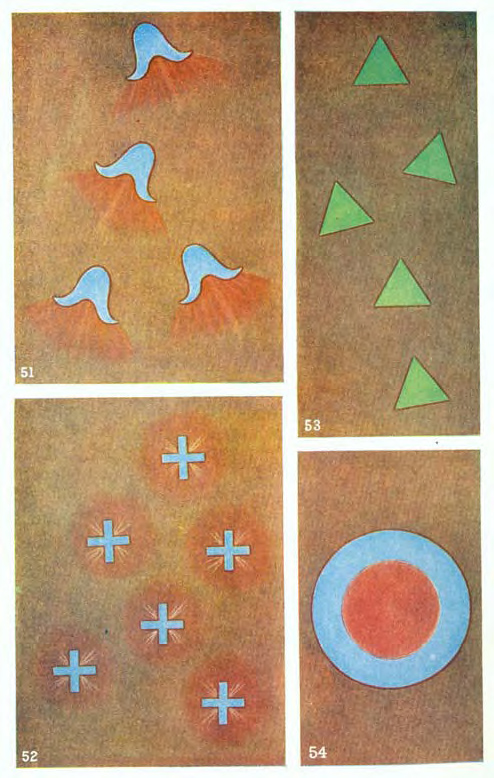
Figure 9. Annie Besant and Charles Leadbeater, 'Helpful Thoughts', Thought Forms, 1901.
Non-objectivity required a new concept of non-perspectival space: a space of oscillating forms, interpenetrating planes and pictorial depth without the use of perspective projection. Wright's Midway Garden mural depicts the feeling of movement through advancing and receding planes that glide across the surface and move up like floating bubbles and down like plummeting stones. Lissitzky would later define this type of picture plane as irrational space.
In 1925 Lissitzky wrote a ground-breaking article entitled 'A. and Pangeometry'[38] in which he discusses A. (art) and irrational space. Irrational space is the representation of a space whose distances cannot be measured by any finite measure: irrational distances cannot be represented as a determinate ratio of integers. For example, two areas of different intensities of color, even when lying on the same plane, are perceived by the mind to be at different distances from the eye. By simultaneously projecting into the foreground and penetrating into the background, irrational space consists of immeasurable distances that require time for the mind to process due to the intense mental operation necessary for comprehension. Irrational space is a space of four dimensions.
The four-dimensional space of Malevich and Lissitzky required intense visualization skill, similar to the Eastern practice of tantric meditation, which gives rise to a transformation of form during contemplation of a yantra. The tesseract was a more easily comprehendible geometric representation of the fourth dimension, such as Theo van Doesburg's hypercube (figure 5). It was not certain whether van Doesburg was ever a member of the Theosophical Society; however, as Mondrian's fellow De Stijl colleague, it would suggest there were influences.
Work was slow for Wright in the 1930's during the Depression, which is when he conceived the idea to start an architecture school to support himself and his family at Taliesin, his home in Spring Green, Wisconsin. His red logo transformed into a double rectilinear spiral to represent the Taliesin Fellowship, inspired by a Native American rock carving Wright once saw. This interlocking petroglyph was a 'symbol of friendship', a handclasp.[39] The characteristic spiral has a central referent or origin suggesting unity and its continuous form is an ancient symbol for eternity. According to most traditions, when the flat spiral is extruded into the third dimension, the world materializes and man spiritualizes along the same spiral: representing the breathing of the cosmos,[40] described by Blavatsky as:
The appearance and disappearance of the Universe are pictured as an outbreathing and inbreathing of "the Great Breath," which is eternal, and which, being Motion, is one of the three aspects of the Absolute—Abstract Space and Duration being the other two.[41]
This higher spiritual dimension, a four-dimensional movement through the space and time of eternal creation, was illustrated using a spiral moving through a horizontal plane by the hyperspace philosopher Charles Howard Hinton in his 1904 book, The Fourth Dimension.[42] Hinton's work was highly influential in Theosophical circles and was characteristically used to discuss spirituality and invisible planes of existence.
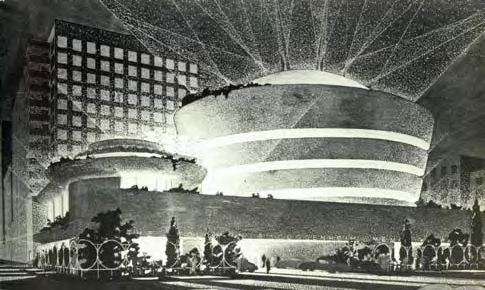
Figure 10. Frank Lloyd Wright, Solomon R. Guggenheim Museum, drawing ca. 1943 © 2011 Frank Lloyd Wright Foundation / Artists Rights Society (ARS), New York.
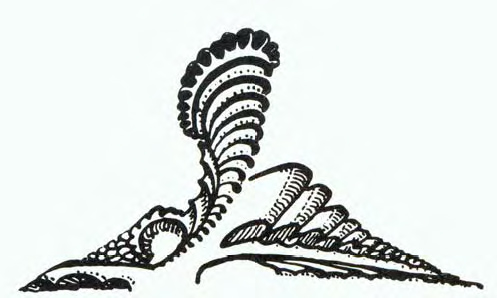
Figure 11. Erich Mendelsohn, Pleasure Pavilion, 1920.
It was the summer of 1943 when Wright was summoned by Baroness Hilla von Rebay (1890-1967)[43] to discuss the future Museum of Non-objective Painting, the forerunner of the present Solomon R. Guggenheim Museum (figure 10). Due to various economic and political reasons, the construction was not completed until after Wright's death in 1959. While this is one of his last projects, this project holds true to the initial theories of architecture Wright presented in 'The Sovereignty of the Individual'.
Beginning in 1929 with paintings purchased from Kandinsky, Moholy-Nagy and Chagall, the Guggenheim collection of non-objective art grew under Rebay's direction; she was later appointed curator of the new Solomon R. Guggenheim Foundation in 1937. When Guggenheim died in 1949, Rebay lost her patron. Her association with the museum later ended in 1952; however, the project that was built was the design worked out originally between Wright and Rebay.
Rebay was an artist in her own regard and intimate with European art circles, including such artists as Hans Arp, Robert Delaunay, Vasily Kandinsky, Paul Klee, Franz Marc, and Marc Chagall, among others. When she was fourteen, she began to attend classes given by Rudolf Steiner in theosophy; later while in Paris, she joined the Theosophical Society in 1909. Born in then-Alsace, she also lived in Switzerland, Italy and Germany prior to coming to America in 1927. Her American art collectors included Gertrude Vanderbilt Whitney and Irene Rothschild Guggenheim.
It was her intent for the museum to be a 'Temple of Non-objectivity': 'Non-objectivity will be the religion of the future… Non-objective paintings are prophets of spiritual life.'[44] Similar to Malevich, Rebay considered non-objective art to have a spiritual basis, to be conceived by divine inspiration directly from a higher consciousness, and to be informed by contemporary scientific theories of space and time. In this nighttime early rendering of the museum (figure 10), either divine light from above is shining down on the building or the divine light of inspiration is radiating from its inner space, suggesting its spiritual contents and fulfilling Rebay's cosmic aspirations:
With infinity and sacred depth create the dome of spirit: expression of the cosmic breath itself—bring light to light!... –let us be reverent to the spirit in everything created… let us create a shrine… with perfected harmony by the order of spiritual reality…[45]
The finished building is a creamy white spiral; the colors are neutral inside and out. It had been Wright's original intent for the exterior to be surfaced in red marble; for the museum to be 'a Creation that did not yet exist.'[46] As a temple to creativity, like the Transportation Building of 1893, he may have hoped to have it clad in his color of creation. To this Rebay objected; her theosophical training would have suggested that the color red was of the lower chakras, the base color of the material world, far from spirituality and the divine.
Wright had proposed a similar ziggurat design in 1924 for the Gordon Strong Planetarium in Maryland, which was not built. For the Guggenheim, though, the shape has been inverted, opening up toward the cosmos to allow a larger area for the domed skylight to fill the interior with natural light. Wright's design is similar to Erich Mendelsohn's fantastic sketch of 1920 for a pleasure pavilion (figure 11); he may have been aware of expressionistic architectural possibilities due to Mendelsohn's 1924 visit to Taliesin.
Taking the structural lessons he learned from the cantilever and its potential for continuity, the museum is one continuous cantilevered spiral, only achievable due to the plasticity of reinforced concrete. According to Wright, 'Here we are not building a cellular composition of compartments, but one where all is one great space on a single continuous floor… Here for the first time architecture appears plastic…'[47] Like the breathing cosmos, the whole building is in motion and the spectator is in motion, too. Predicted by Wright in 'The Sovereignty of the Individual', the building itself is the ornament: '…in a structure conceived in the organic sense, the ornamentation is conceived in the very ground plan, and is of the very constitution of the structure.'[48]
While Wright may not have ever admitted to this, his writings would suggest that he had been working non-objectively his entire career; he placed emphasis on feeling and inner intuition and the use of non-representational primary geometric forms. Wright's organic architecture evolved from the inside out and placed primacy on the interiority of space, was shaped by natural light and the extension of view into the landscape, was grounded in the principle of continuity and structural plasticity to allow for the liberation of space, was true to the nature of materials and their inherent capacity to define architectural style, and was defined by the idea of integral ornament being the pattern of nature made visibly articulate and expressed as the inner rhythm of form.[49]
Wright himself may not have been a member of the Theosophical Society, but he lived and worked within an esoteric milieu that helped to shape a theosophic-inspired architectural theory, which in turn guided his design process to produce significant projects that for their time could be described as designs that had never been seen before.
I would like to thank Indira Berndtson of The FLLW Archives at Taliesin West, Kathryn Stine of the Frank Lloyd Wright Preservation Trust, Andrea Reithmayr of the University of Rochester Rare Books and Special Collections, and Ann Keith Kennedy of the Drexel University Media Arts and Design Library for their invaluable help in research.
Endnotes
[1] Kliment Timiriazev, Architectural Forum 68/1 (1938), on an insert located between pages 102-103.
[2] Matila Ghyka, Le Nombre d'Or, Tome I: Les Rythmes (France: Gallimard, 1931), 65-66. The construction of the circle of orientation was a procedure in agreement with religious importance that was used in the orientation of temples by the ancient Egyptians, Greeks, and Romans. Although not mentioned by Ghyka, the encircled crossing was a guarantee of the temple's alignment with the cardinal directions and was used prior to the discovery of the magnetic compass. The temple would then be oriented and aligned with respect to the sun, not magnetic north. This procedure was also used, and still is today, in the construction of Hindu and Buddhist temples, among others, in India. See also Victor Magnien, "Initiation Holoclère," Les Mystères d'Éleusis: leurs origins le ritual del leurs intiations (Paris: Payot, 1929), 164-183.
[3] The ancient Roman procedure is described in Vitruvius, De Architectura, trans. Frank Granger (Cambridge: Harvard University Press, 1931), Book I, Chapter VI.6.
[4] H.P. Blavatsky, Isis Unveiled, Volume I Science, (Pasadena, CA: Theosophical University Press, 1960 (facsimile of original 1877 edition)), 508.
[5] Paul Carus, "The Dawn of a New Religious Era," Forum 16 (November 1893), 388-395.
[6] J. W. Hanson, editor, The World's Congress of Religions (Chicago: International Publishing Company, 1894), 8-11, 1192.
[7] Thomas Edison applied for Fellowship status on March 27, 1878, and was formally admitted on April 5; see Wouter Hanegraaff, editor, Dictionary of Gnosis & Western Esotericism (Leiden, The Netherlands: Koninklijke Brill NV, 2006), 1115.
[8] James W. and Daniel B. Shepp, Shepp's World Fair Photographed (Philadelphia: Globe Bible Publishing Co., 1893), 502-3.
[9] All the drawings were not actually in Wright's own hand, he was assisted by his son Lloyd and his draftsman Taylor Woolley. In H. Allen Brooks, "Frank Lloyd Wright and the Wasmuth Drawings," The Art Bulletin 48/2 (June 1966), 193-202, the author discusses the various assistants' contributions to the drawings.
[10] Bruce B. Pfeiffer, editor, Frank Lloyd Wright Collected Writings Volume 1 1894-1930 (New York: Rizzoli, 1992), 101.
[11] Treatises such as Andrea Palladio, trans. by Robert Tavernor and Richard Schofield, The Four Books on Architecture (1570) (Cambridge: The MIT Press, 1997), Joseph Gwilt, The Encyclopedia of Architecture: The Classic 1867 Edition (New York: Crown Publishers, Inc., 1982 (first published 1842)), and Eugène-Emmanuel Viollet-le-Duc, Lectures on Architecture Volume I (1877) and Volume II (1881) (New York: Dover Publications, 1987); this is discussed by Reyner Banham, Age of the Masters (New York: Harper & Row, 1975), 50-62 and Peter Collins, Changing Ideals in Modern Architecture 1750-1950 (Kingston and Montreal: McGill-Queen's University Press, 1988), 285-293.
[12] Frank Lloyd Wright, Studies and Executed Buildings by Frank Lloyd Wright (New York: Rizzoli, 1986 (originally published in 1910 as Ausgeführte Bauten und Entewürfe von Frank Lloyd Wright)), 14; introduction by Wright republished in 1951 as "Sovereignty of the Individual".
[13] H. P. Blavatsky, The Secret Doctrine, Volumes I and II, (Los Angeles: The Theosophy Company, 1964 (facsimile of original 1888 edition)), 274.
[14] Roger Friedland and Harold Zellman, The Fellowship: the untold story of Frank Lloyd Wright and the Taliesin Fellowship (New York: Harper Collins, 2006), 5-9.
[15] Hanegraaff, Dictionary, 1075
[16] Wright would later use this term to describe his work in an address to the Junior Chapter of the American Institute of Architects in New York City in 1952. See Frank Lloyd Wright, "The Destruction of the Box," Frank Lloyd Wright: Writings and Buildings (New York: Meridian Books, 1960), 284-288.
[17] Mark Heyman, Frank Lloyd Wright and Susan Lawrence Dana: From the Town and the Prairie Conference (Springfield, Illinois: Sangamon State University, April 1984).
[18] Wright, Studies and Executed Buildings, 18.
[19] Gottfried Semper, The Four Elements of Architecture and Other Writings (1834-1869) (New York: Cambridge University Press, 1989), 102. Semper was an influence on Chicago architects active after the fire of 1871. Later, Chicagoan John Wellborn Root was to translate Gottfried Semper's "Development of Architectural Style" from the original German and publish it in Inland Architect in December 1889 and February 1890. Semper's 1851 comparative study of architecture entitled "The Four Elements of Architecture" described his view of the origins of architecture as stemming from four elements: the roof, the enclosure and the mound, which were grouped around the hearth, "that sacred focus around which the whole took order and shape."
[20] Frank Lloyd Wright, "The Meaning of Materials—Glass", In the Cause of Architecture (New York: Mc-Graw-Hill, Inc., 1975 (originally published 1928)), 200.
[21] Frank Lloyd Wright, edited by Edgar Kaufmann, An American Architecture: Frank Lloyd Wright (New York: Horizon Press, 1955), 84.
[22] Wright, An American Architecture, 75-77.
[23] Wright, Studies and Executed Buildings, 12.
[24] Wright, An American Architecture, 75.
[25] Frank Lloyd Wright, "Designing Unity Temple," Frank Lloyd Wright: Writings and Buildings (New York: Meridian Books, 1960 (from An Autobiography, 1932)), 76.
[26] Wright, Writings and Buildings, 82.
[27] Wright, Writings and Buildings, 81.
[28] Wright, In the Cause of Architecture, 199.
[29] Hanegraaff, Dictionary, 445-454.
[30] Donald Langmead and Donald Leslie Johnson, Architectural Excursions: Frank Lloyd Wright, Holland and Europe (Westport, Connecticut: Greenwood Press, 2000), 91-92.
[31] There were two similar murals, one each at the north and south ends of the tavern.
[32] Paul Kruty, Frank Lloyd Wright and Midway Gardens (Urbana and Chicago: University of Illinois Press, 1998), 39. He had not yet married Mamah Cheney because his divorce from his first wife had not been finalized. He married his second wife Miriam Noel in 1923 after his divorce from his first wife came through. They were married less than four years.
[33] Kruty, Midway Gardens, 146-148.
[34] Wassily Kandinsky, Concerning The Spiritual In Art And Painting In Particular, 1912 (New York: George Wittenborn, Inc., 1947).
[35] Kazimir Malevich, The Non-Objective World (Chicago: Paul Theobald and Company, 1955 (written 1922-1925)), 30.
[36] Malevich, The Non-Objective World, 67.
[37] 'The square = feeling' in Malevich, The Non-Objective World, 76.
[38] Lissitzky, "A. and Pangeometry," in Sophie Lissitzky-Küppers, El Lissitzky . Life . Letters . Texts (London: Thames and Hudson, 1968 (originally written 1925)), 352-358.
[39] Correspondence with Indira Berndtson, Administrator of Historic Studies at The FLLW Archives, Taliesin West, 25 July 2008.
[40] Jill Purce, The Mystic Spiral: Journey of the Soul (London: Thames and Hudson, 1974), 10-11.
[41] Blavatsky, The Secret Doctrine, 43.
[42] Charles Howard Hinton, The Fourth Dimension (London: George Allen & Unwin, Ltd., 1951 (sixth impression of the second edition of 1906, originally published 1904)), 25.
[43] Baroness Hildegard Anna Augusta Elisabeth Rebay von Ehrenwiesen.
[44] Joan M. Lukach, Hilla Rebay: In Search of the Spirit in Art (New York: George Braziller, 1983), 96.
[45] Lukach, Hilla Rebay, 186.
[46] Lukach, Hilla Rebay, 185.
[47] Wright, An American Architecture, 215-217.
[48] Wright, Studies and Executed Buildings, 14.
[49] Frank Lloyd Wright, The Natural House (New York: Horizon Press, Inc., 1954), 43-56.






